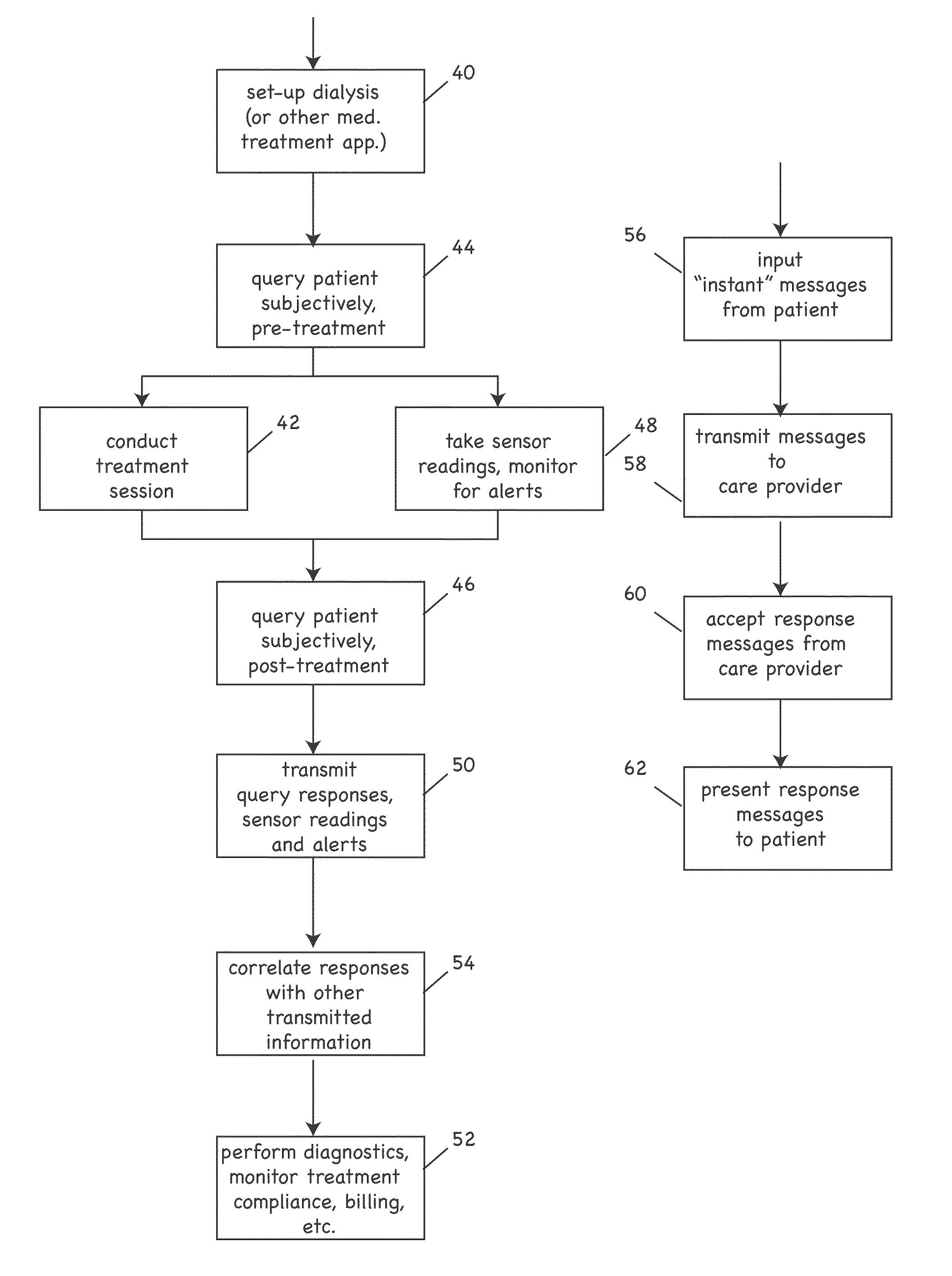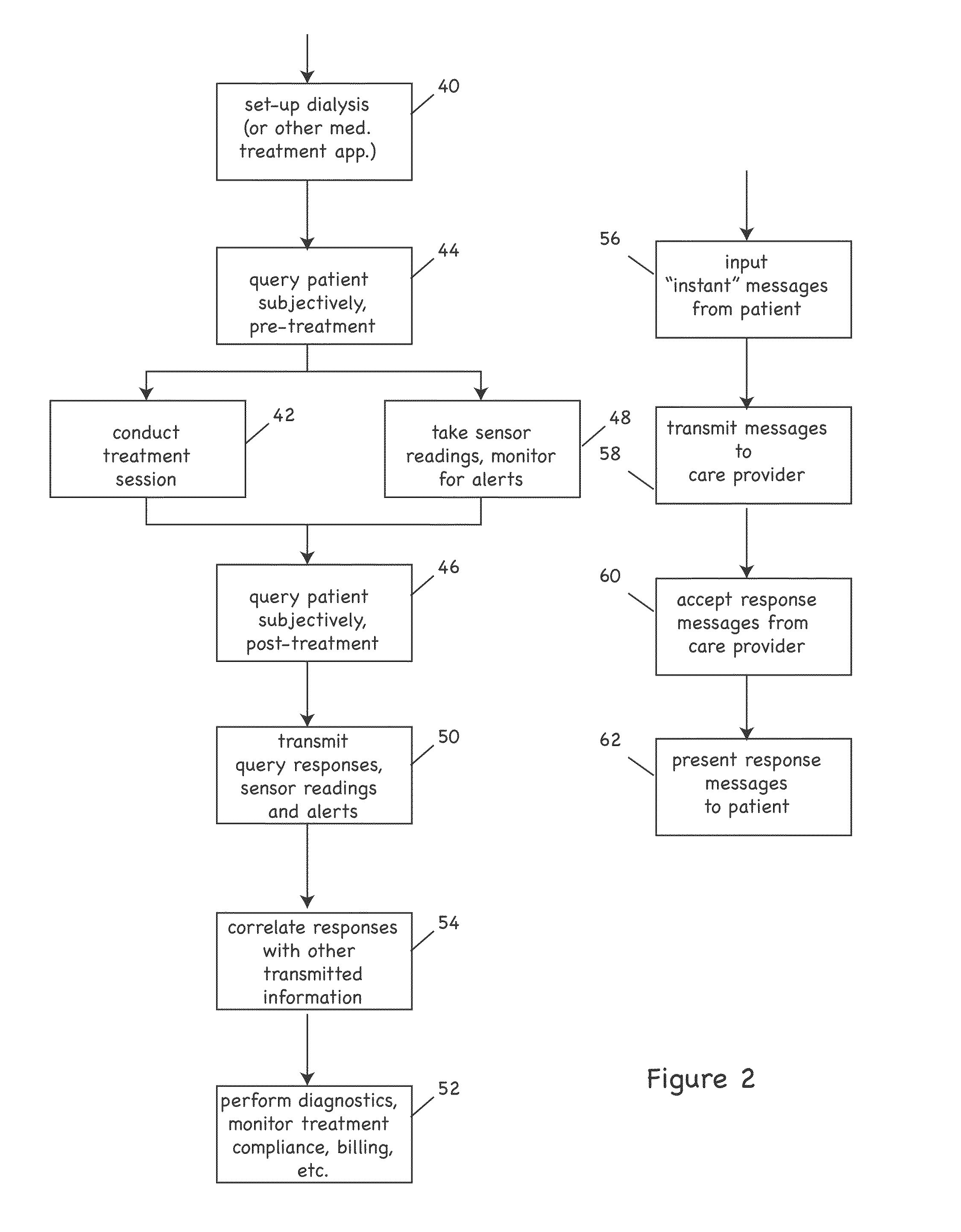Patient treatment and monitoring systems and methods
a monitoring system and patient technology, applied in the field of patient treatment and monitoring systems and methods, can solve the problems of high dropout rate of hhd programs, patients that drop out of hhd programs, and the decision to place patients on home hemodialysis is not necessarily a simple on
- Summary
- Abstract
- Description
- Claims
- Application Information
AI Technical Summary
Benefits of technology
Problems solved by technology
Method used
Image
Examples
Embodiment Construction
[0030]Architecture
[0031]FIG. 1 depicts examples of a health care delivery device and system according to the invention. Illustrated device 10 comprises a medical treatment apparatus 12, a processor 14, an output device 16 and an input device 18, all coupled as shown.
[0032]Illustrated medical treatment apparatus comprises a dialysis unit and, more particularly, a hemodialysis unit of the type commercially available or otherwise known in the art for such purpose, e.g., including, for example, fresh and spent dialysate containers 12A, 12B, filter / dialyzer 12C, pump 12D, supplemental infusate supply 12E (e.g., for heparin and / or other medications), and so forth, as adapted in accord with the teachings hereof. The illustrated medical treatment apparatus 12 is, moreover, of the type adapted for use in the home or other locale remote for a dialysis center, hospital or other central treatment center. Alternatively, or in addition, the apparatus 12 may be adapted for use in such a dialysis c...
PUM
| Property | Measurement | Unit |
|---|---|---|
| flexibility | aaaaa | aaaaa |
| physical | aaaaa | aaaaa |
| blood pressure | aaaaa | aaaaa |
Abstract
Description
Claims
Application Information
 Login to View More
Login to View More - R&D
- Intellectual Property
- Life Sciences
- Materials
- Tech Scout
- Unparalleled Data Quality
- Higher Quality Content
- 60% Fewer Hallucinations
Browse by: Latest US Patents, China's latest patents, Technical Efficacy Thesaurus, Application Domain, Technology Topic, Popular Technical Reports.
© 2025 PatSnap. All rights reserved.Legal|Privacy policy|Modern Slavery Act Transparency Statement|Sitemap|About US| Contact US: help@patsnap.com



